Miocene-Pliocene-Cretaceous
Green Mill Run (GMR) is a creek that runs through the city of Greenville,NC. It cuts through several strata
of different ages and thus produces a melange of fossils from disparate geological periods.
I came here hoping to find a Meg.
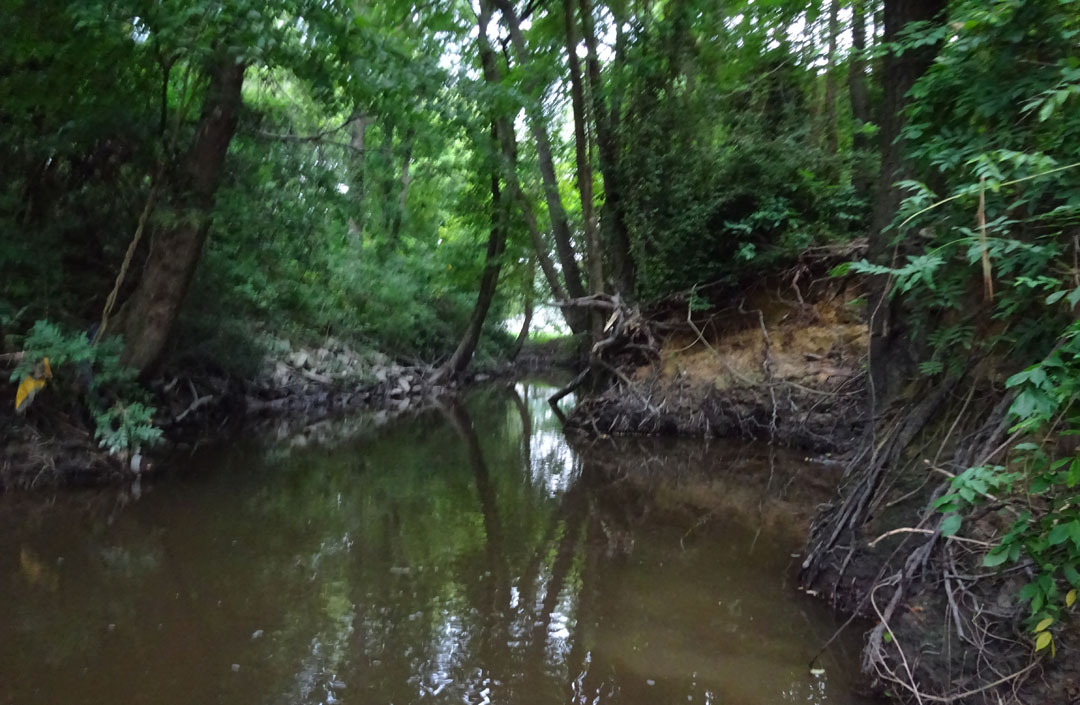
Green Mill Run
The creek is has running water year round so wading is to be expected. During periods of low water levels, the depth is usually less than 2 feet.
The creek can be accessed from several locations in town, I went in at the Elm Street Park.
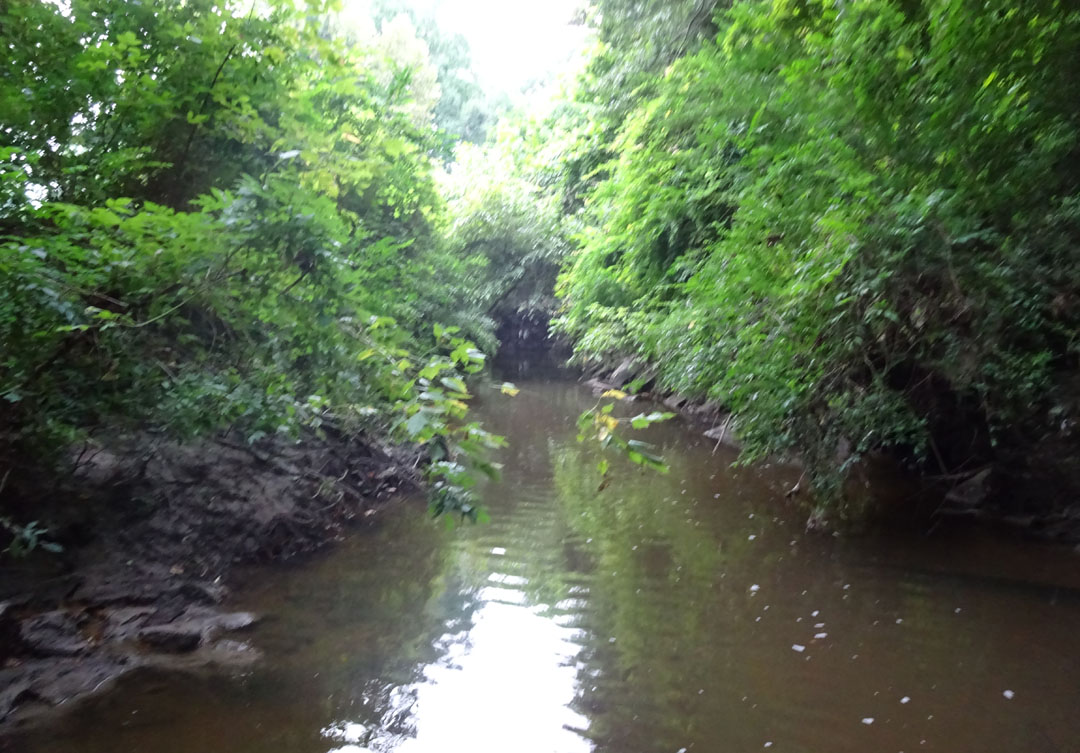
Green Mill Run
The one day I had to spend there, the average depth was a bit deeper. It was often waist deep or deeper.
I left my electronics in the car, ie. cell phone and camera.
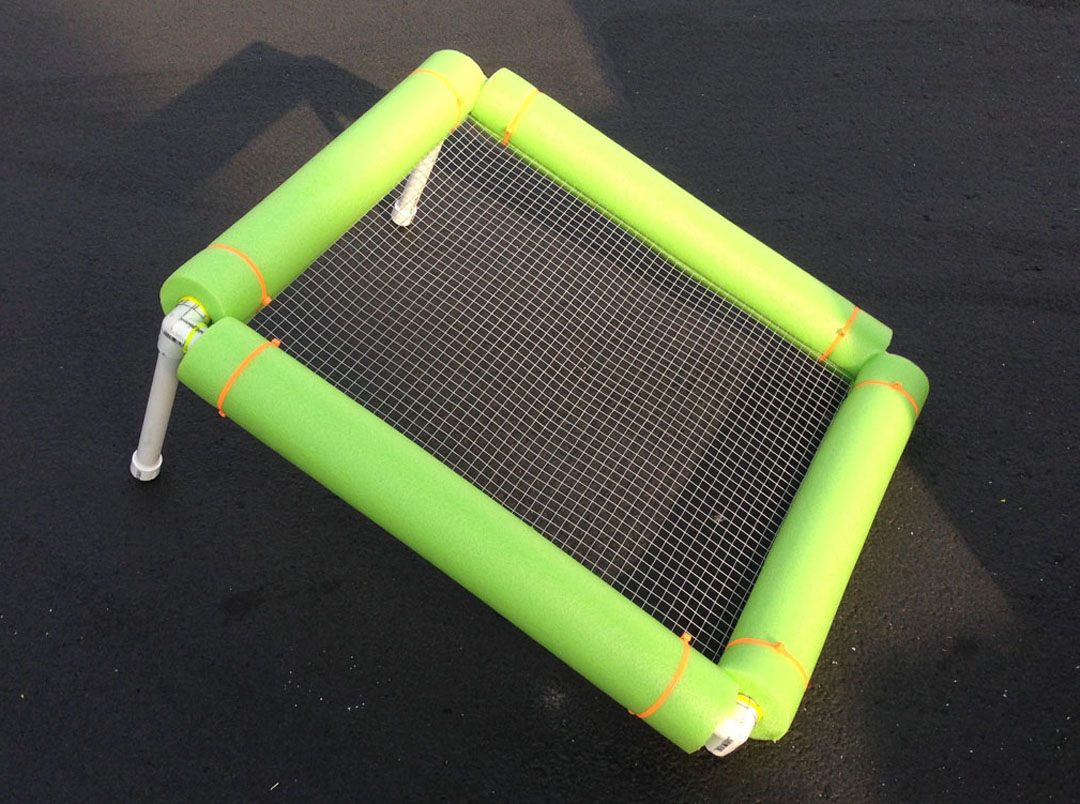
Floating Sieve
The methodology to finding fossils here is to slog through the creek bed until you find loose gravel bars.
Then shovel the gravel into your sieve and sift through looking for the fossls.
Thus, a "floating sieve" is the way to go. I built this one about an hour with minimal tools and about $25 in materials from Lowes.
The frame is made of 3/4" PVC pipe. I trimmed the 1/2" hardware cloth to fit the inside of the frame and attached it with cable ties.
I sliced the pool noodles open and wrapped them around the PVC using more cable ties. The legs were an option that I ended up not using.
I also used some rope to "leash" the sieve to my belt loop so that it just floated along behind me when moving to a new spot.
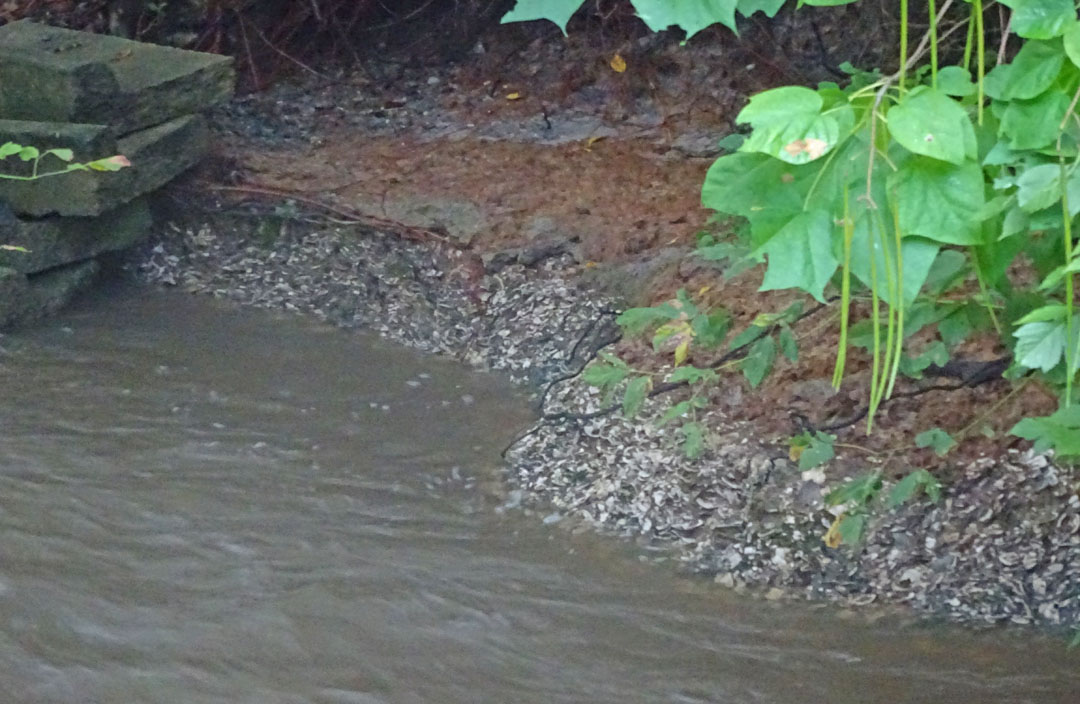
Shelly Layer
Along the creek there are outcrops of the Miocene Pungo Formation, where you can collect a variety of bivalves,
pectens, gastropods and coral. I found one small shark tooth in situ within this layer.
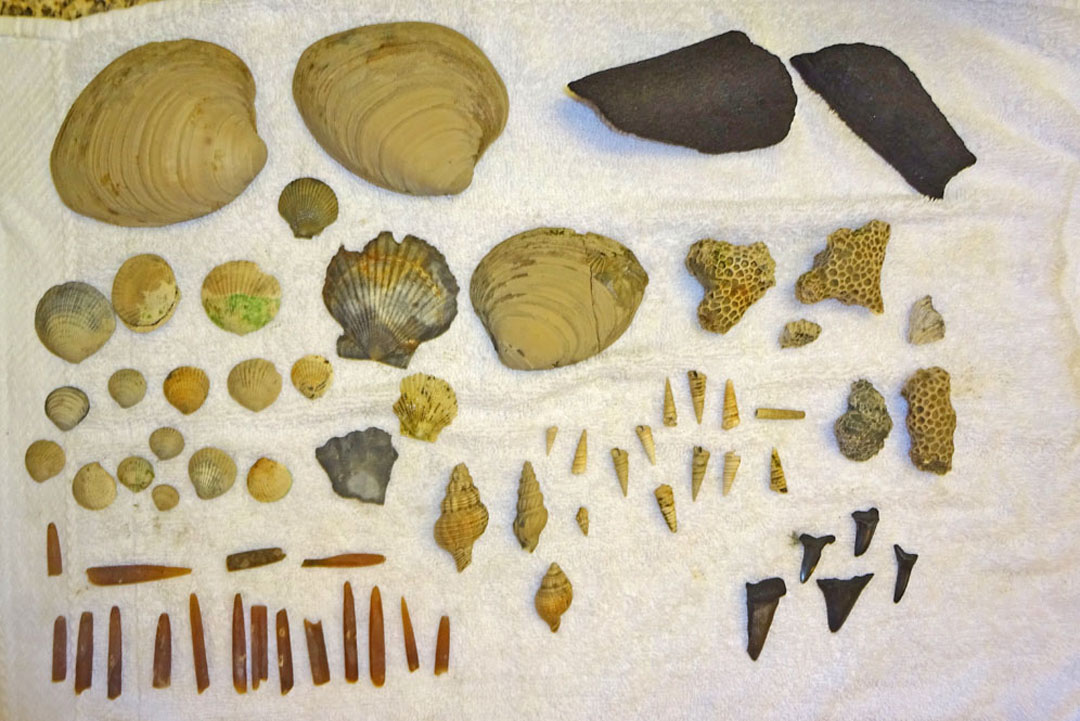
The Day's Haul
Overall, I found quite a variety of fossils but no Megaladon.
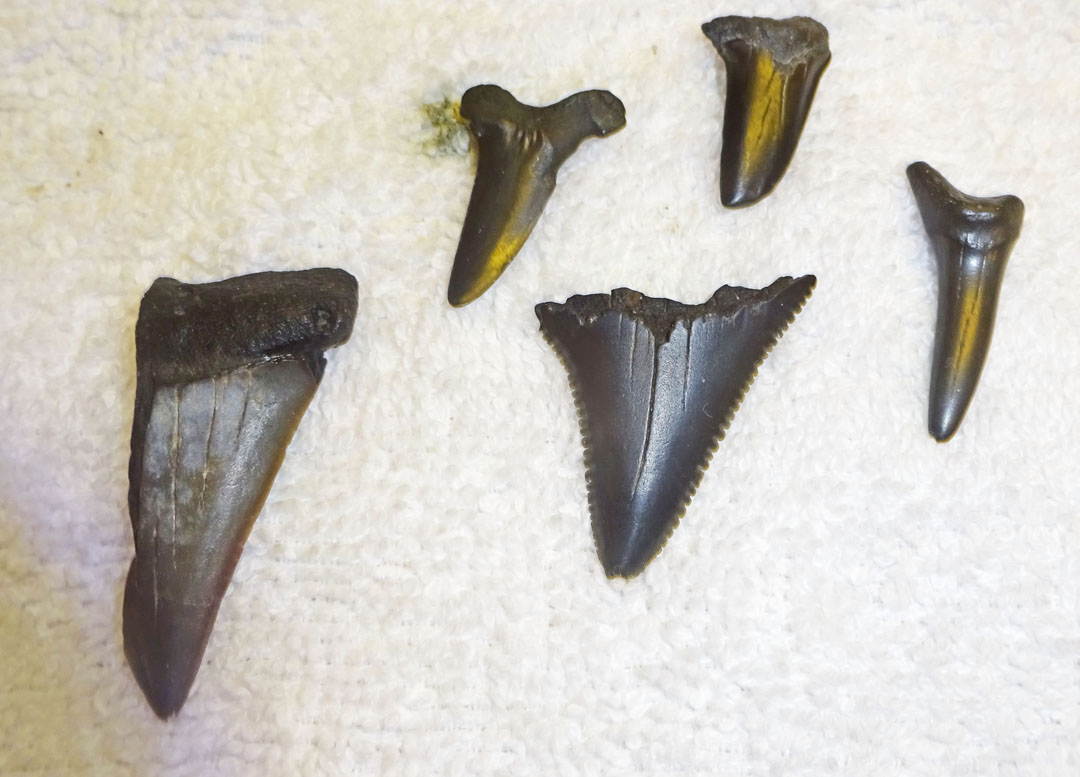
Shark Teeth
This location is famous for the quantity and variety of shark teeth that can be found. Unfortunately, I was not
very lucky this time. But some teeth is still better than no teeth! Too bad the White Shark tooth is missing the root.
That would have made my day.
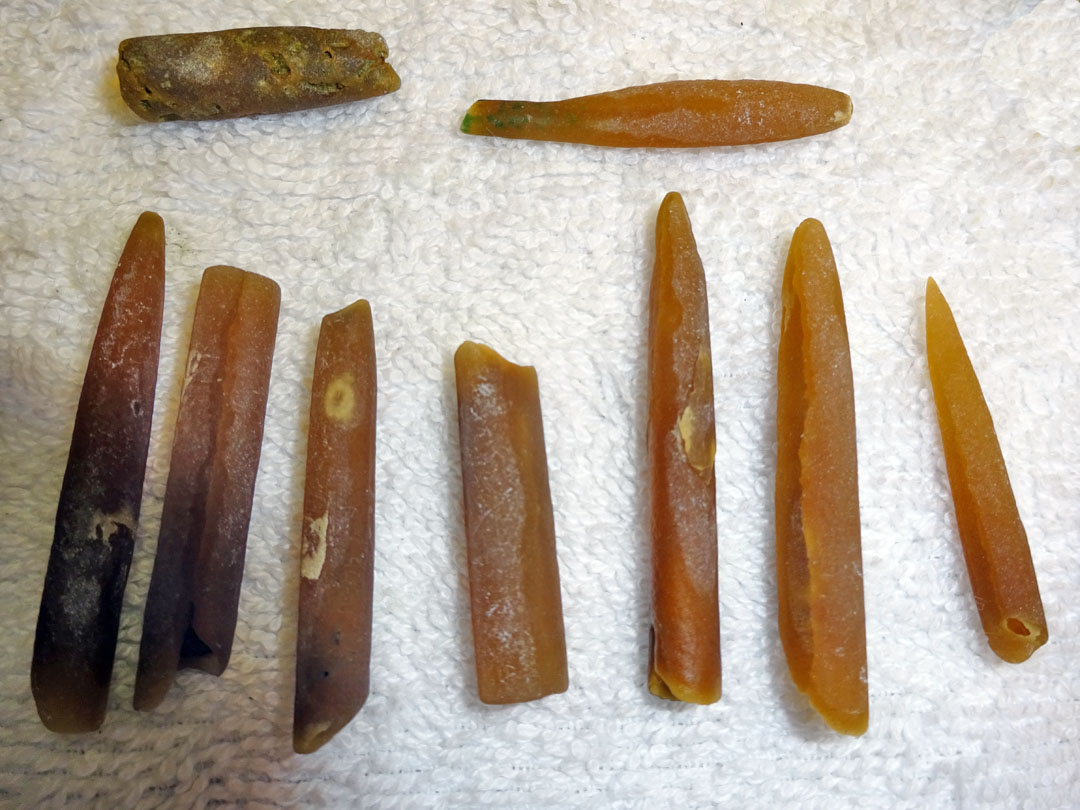
Belemnites
I believe that these amber colored belemnites come from the Cretaceous strata. All of them were found in gravel or
sand bars, having been washed from some distance from upstream.
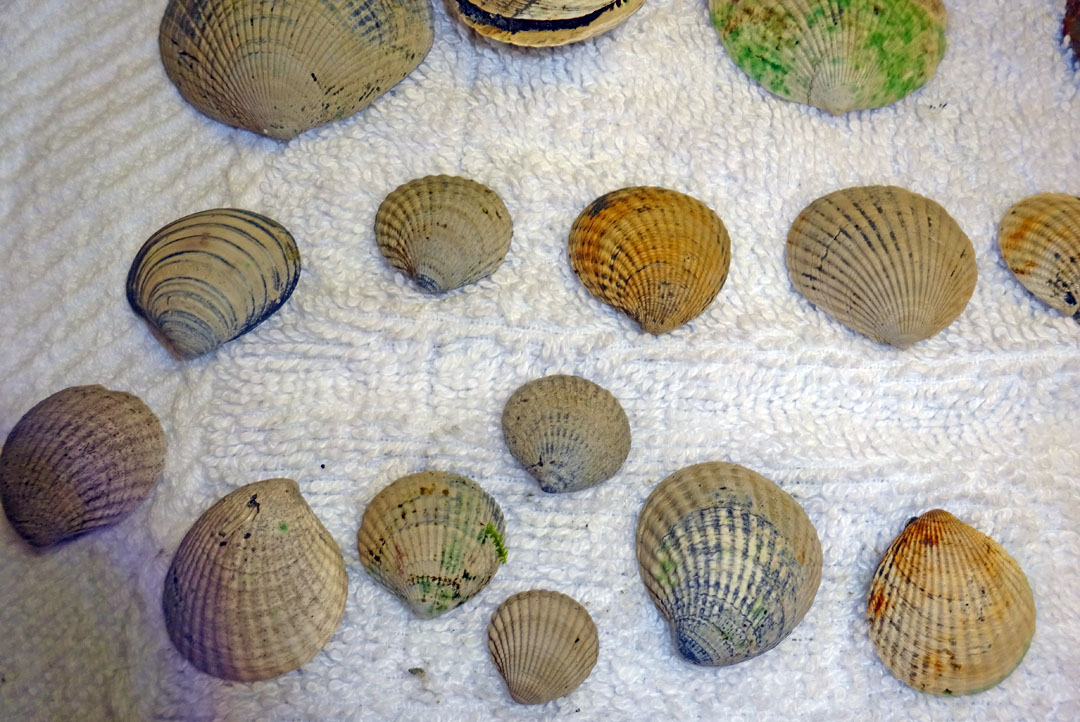
Clams aand Mussels
The shelly layer was chock full of a variety of clams and mussels as well as small and large pectens.
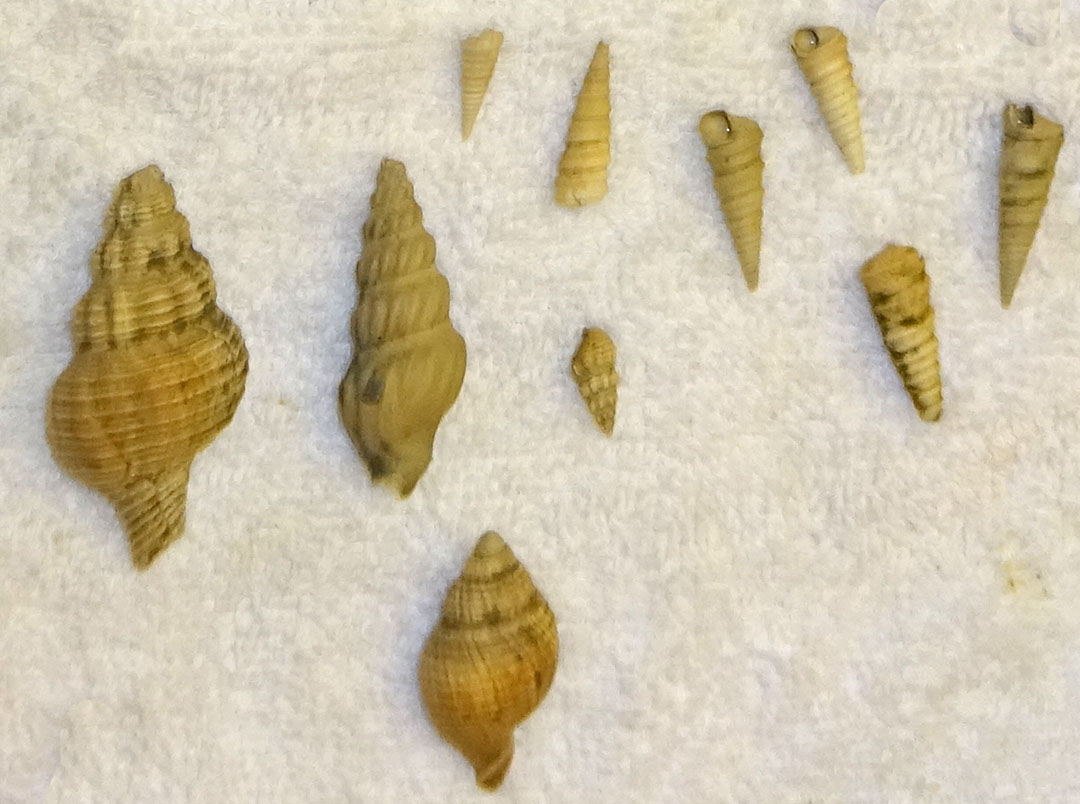
Gastropods from the Shelly Layer
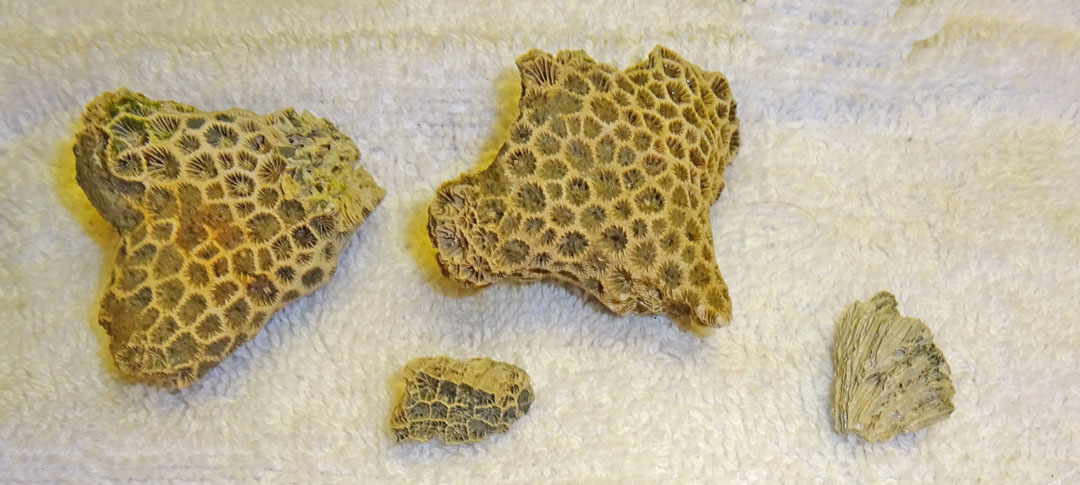
Coral from the Shelly Layer
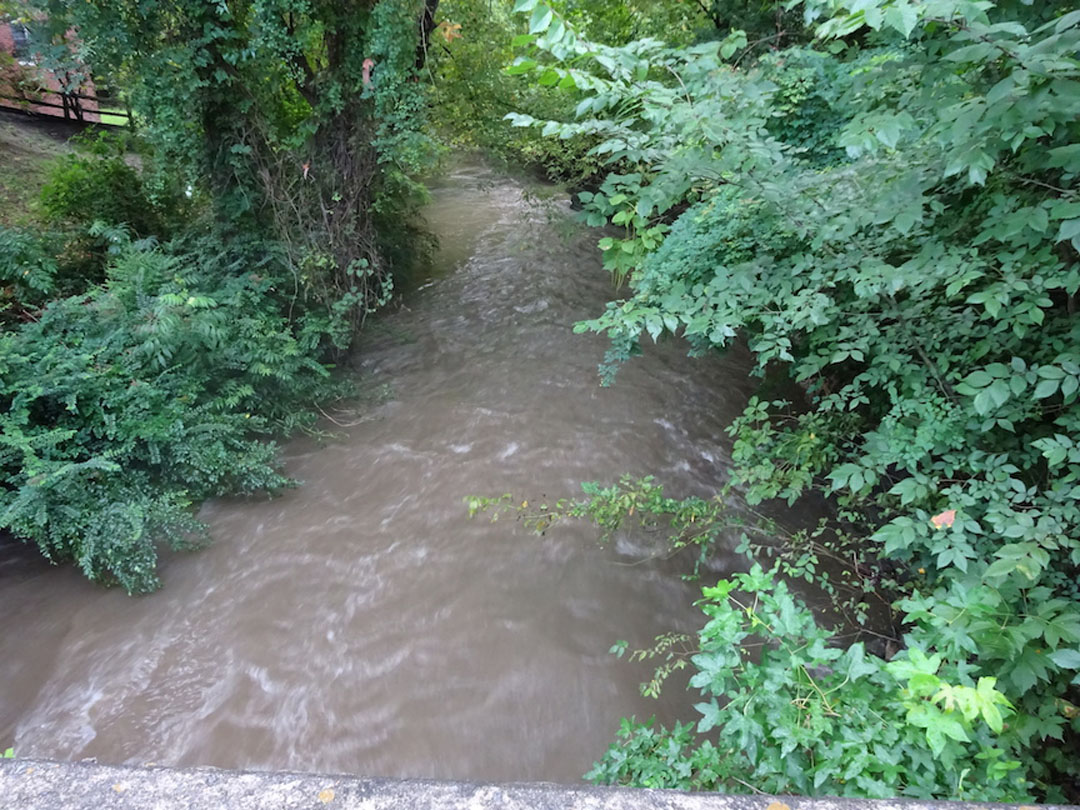
The next day...
I spent about 5 hours in the creek before it started to rain. It rained most of the rest of that day.
I checked on the creek the next morning and it had become a raging torrent, at least two feet higher than the day before.
No hunting that day...
[Other Sites ] [ Fossil Page ] [ Home ]